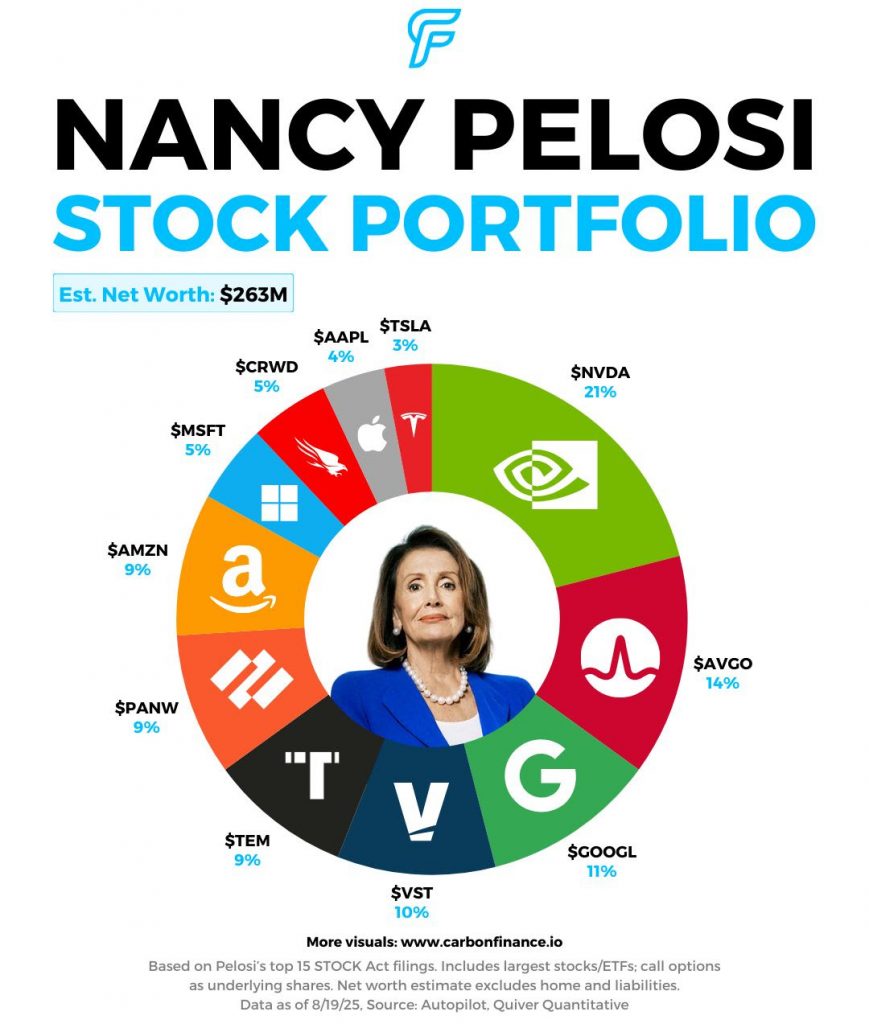
Nancy Pelosi has made some changes to her stock portfolio of late and here is how it looks as at today.
Nancy keeps adding to her Palo Alto Networks (PANW) position. I think there is a lot of opportunity there.
Tech, Business, Finance and Everything Else

Nancy Pelosi has made some changes to her stock portfolio of late and here is how it looks as at today.
Nancy keeps adding to her Palo Alto Networks (PANW) position. I think there is a lot of opportunity there.
SoftBank has invested $2 billion in Intel.
SoftBank Group Chairman and CEO Masayoshi Son said in a statement that the “strategic investment reflects our belief that advanced semiconductor manufacturing and supply will further expand in the United States, with Intel playing a critical role.”
This is mixed with the US Government also announcing that they will take a 10% stake in Intel.
David Vélez, Nubank’s CEO and co-founder, just sold 33 million Class A shares (around 0.7% of the company’s total shares) through Rua California Ltd. He said it was for personal asset planning—about 3.5% of his stake.
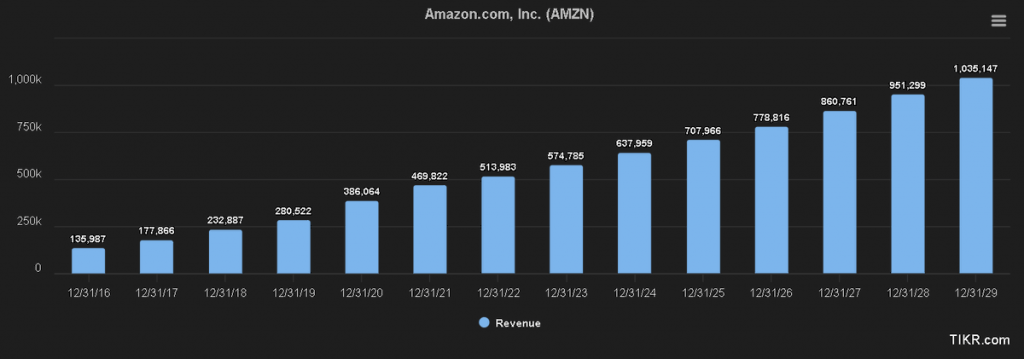
Amazon has a chance of becoming the first company ever to reach $1 trillion in revenues. I think it is coming! (but still have to wait a few years)
Salesforce has announced that they will be acquiring Regrello to help drive their AI Agentic agenda.
The press release from Salesforce providing very limited information on the deal (so if someone at Saleforce reads this – let me know the details 😉 )
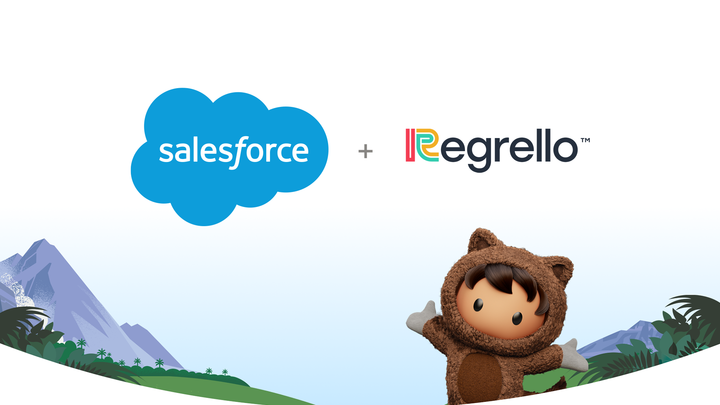
via Reuters.
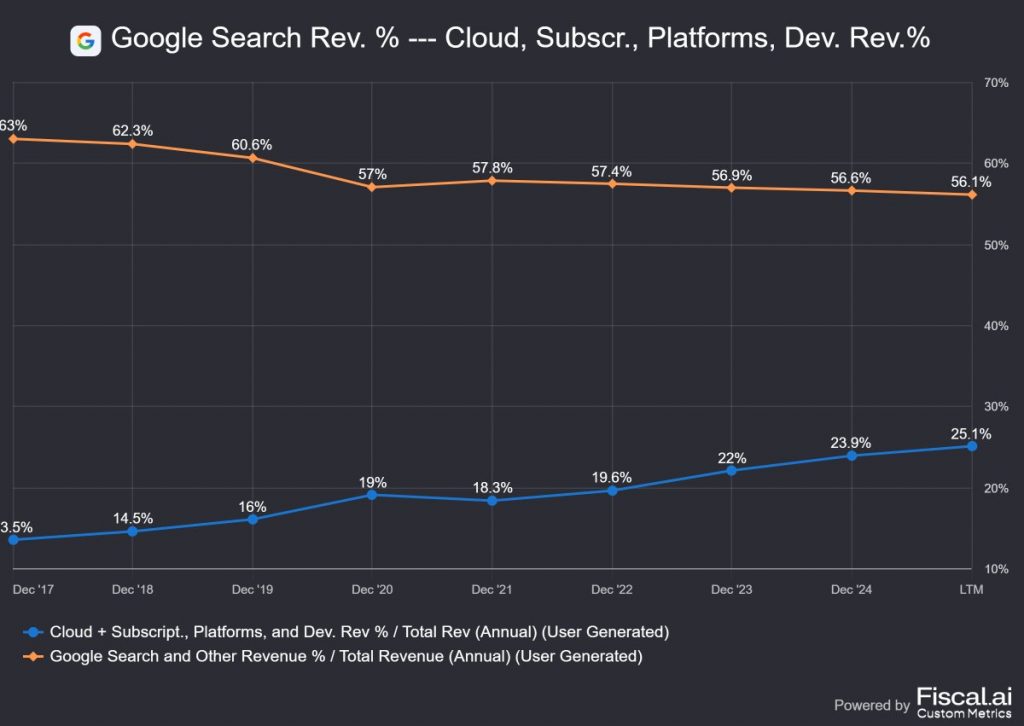
Alphabet’s revenues are become more diverse over time – and quickly!
Google Search revenues now make up only 56.1% of their total revenues and the gap is getting smaller every quarter.
Google Cloud is driving growth in the other areas, but YouTube is also climbing fast as well as other subscriptions and devices (and lets not even talk about Waymo and its potential).
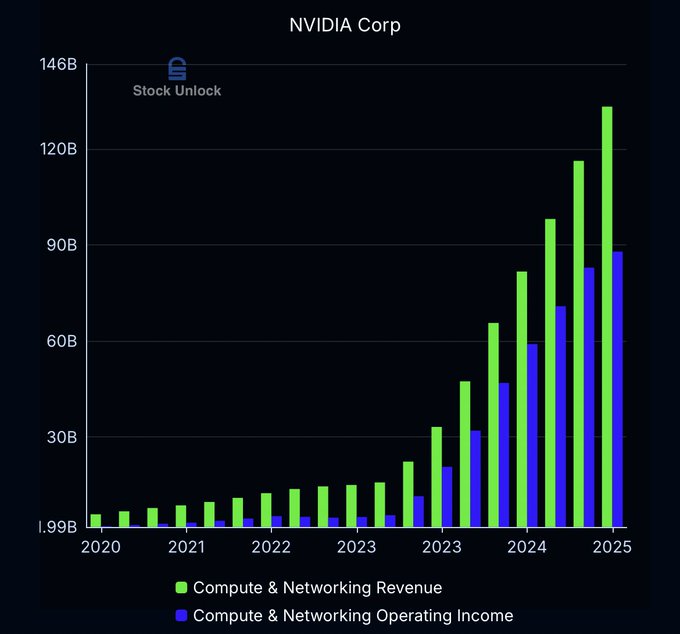
Nvidia earnings are reported next week. It will be very interesting to see how this chart continues to move over the coming quarters and years. I think it is all going higher, but I think we are starting to see a little bit of a slower growth, which hopefully will allow them some breathing space to stabilise a few things.
The @xAI Grok 2.5 model, which was our best model last year, is now open source. Grok 3 will be made open source in about 6 months.
Chad Smith is by far and away my favourite drummer in the world.
Here is a video of him playing – Bring Me The Horizon – for Drumeo.
He is just amazing at improv.
Uber CEO on Tesla using Camera Vision over LiDAR:
— Nic Cruz Patane (@niccruzpatane) August 24, 2025
“I think in the near-term it’s going to be very difficult, and @elonmusk would tell me I’m wrong, and never bet against him, but it’s my instinct — in the near-term it’s going to be very difficult to build a camera only product… pic.twitter.com/UgFNdTiLb8
Uber CEO on Tesla using Camera Vision over LiDAR: “I think in the near-term it’s going to be very difficult, and
Elon Musk would tell me I’m wrong, and never bet against him, but it’s my instinct — in the near-term it’s going to be very difficult to build a camera only product that has superhuman level of safety. Will it be possible? Quite possibly yes. If you can have instrumentations that include cameras and LiDAR ; the cost of Solid State LiDAR is only $400-$500— WHY NOT include LiDAR as well in order to achieve superhuman safety. So, possible? Yeah it will be — I don’t know when, but is possible the better product? I’m not sure. All of your partners right now are using a combination of camera, Radar and LiDAR, and I personally think that’s the right solution— but I could be proven wrong.”

There is a great article over at The Verge about how Fidji Simo is wrapping up her first week at OpenAI, where she now oversees most of the companies 3,000 employees.
It feels like there is a power shift happening inside OpenAI.
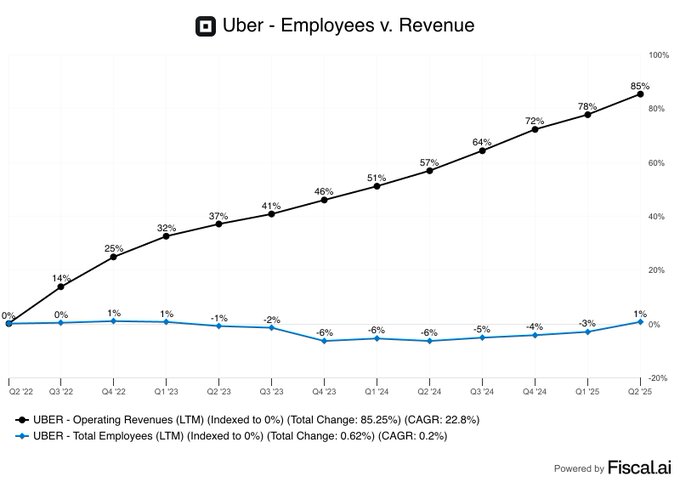
Uber has nearly doubled its revenue while keeping its employee count flat over the last 3 years.
This is a stagering chart. I hope this trend continues! It is also providing them with more strong free cash flow to spend into other areas of the business.
Manchester United’s new £50M training ground, which has its own barbers, will open next month when Ruben Amorim’s squad return from their pre-season tour to the United States.

Based on the search results, I can provide the following comparison of XIACF’s current price to its 52-week high and low:
The 52-week range for XIACF (Xiaomi Corp Class B) stock is $1.40 – $2.64.
As of the most recent data available:
Comparing these figures:
This indicates that XIACF is currently trading at its highest point over the past year, suggesting strong recent performance or positive market sentiment towards the stock.
The largest music streaming services in India are:
These services reflect a mix of local and international offerings, catering to the diverse musical tastes of Indian listeners, with significant growth in streaming volumes reported in recent years.
Based on the search results and my knowledge, here’s how Zoho CRM compares to other CRM systems:
Compared to other CRMs, Zoho’s main strengths lie in its affordability, customizability, and the breadth of its feature set when considering the entire Zoho One suite. However, it may fall short in areas like user interface design and the depth of certain features compared to more specialized CRM solutions.
Zoho excels in several areas, making it a popular choice for businesses looking to enhance their operations. Here are the key strengths of Zoho:
Overall, Zoho is particularly good at providing a comprehensive, customizable, and cost-effective solution for managing customer relationships and business operations, making it a strong contender in the CRM market.
RouteNote’s royalty payment process has some unique aspects compared to other distribution services:
Unlike some services that may have more complex pricing structures or longer payment delays, RouteNote aims to offer a straightforward and relatively quick payment process. However, it’s important to note that the actual speed of payments can vary depending on the type of royalty and the specific platforms involved.
RouteNote aims to ensure fair royalties for artists through several key practices:
While some users have reported issues with payments, these appear to be isolated incidents rather than systemic problems. RouteNote’s overall structure and policies are designed to provide fair and transparent royalty distribution to artists. However, as with any service, it’s crucial for artists to carefully read the terms of service, set up their payment information correctly, and maintain open communication with the company if any issues arise.